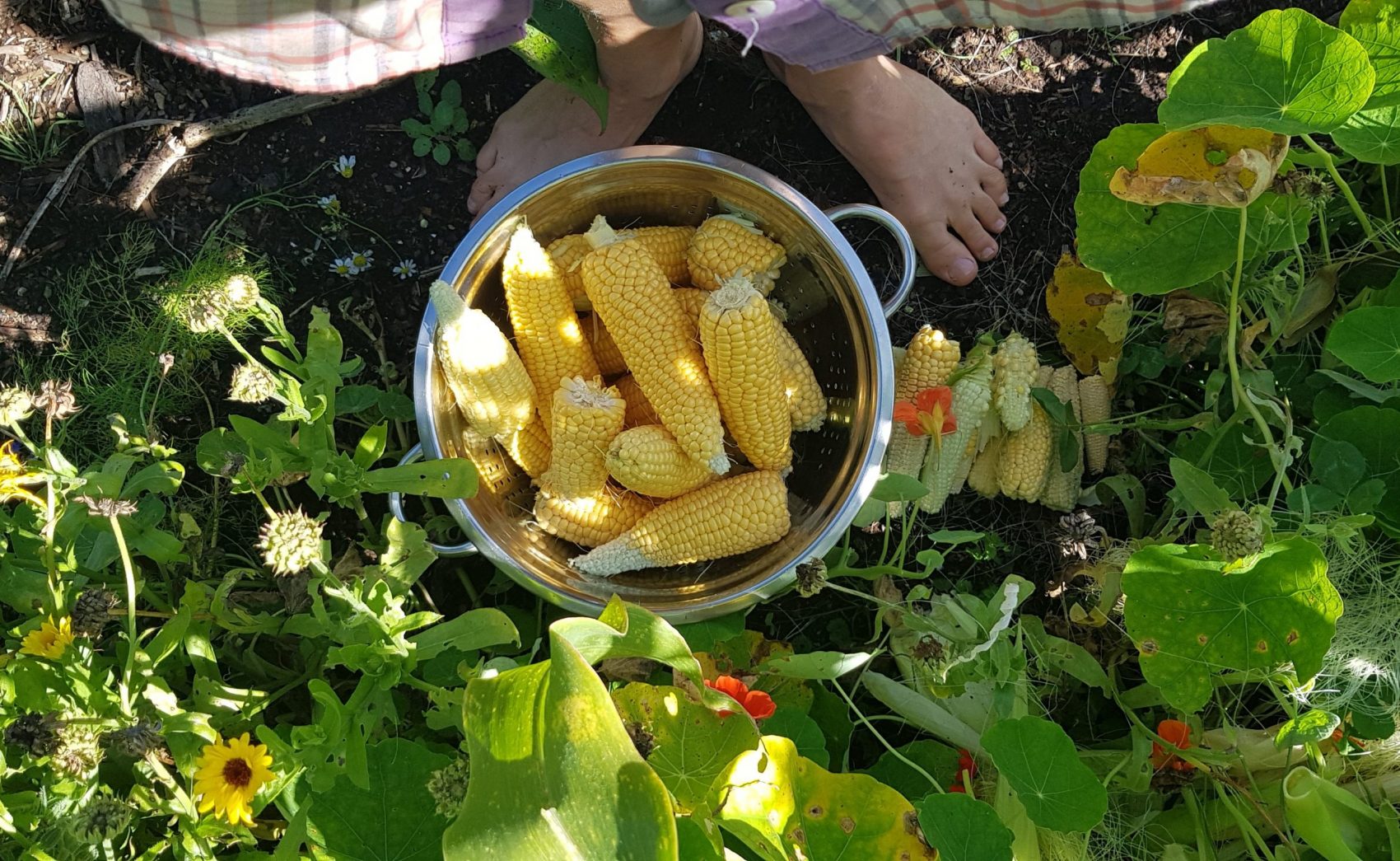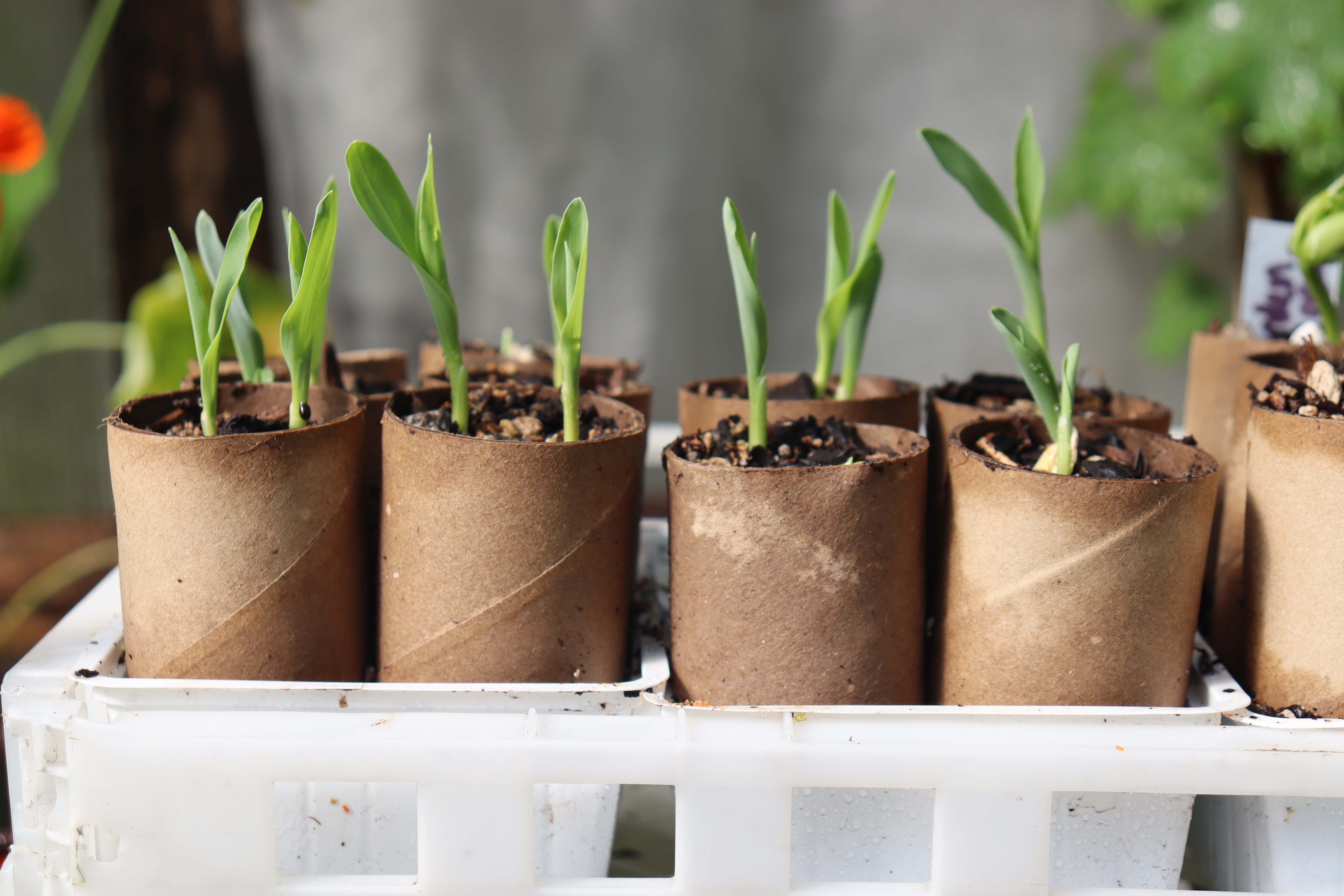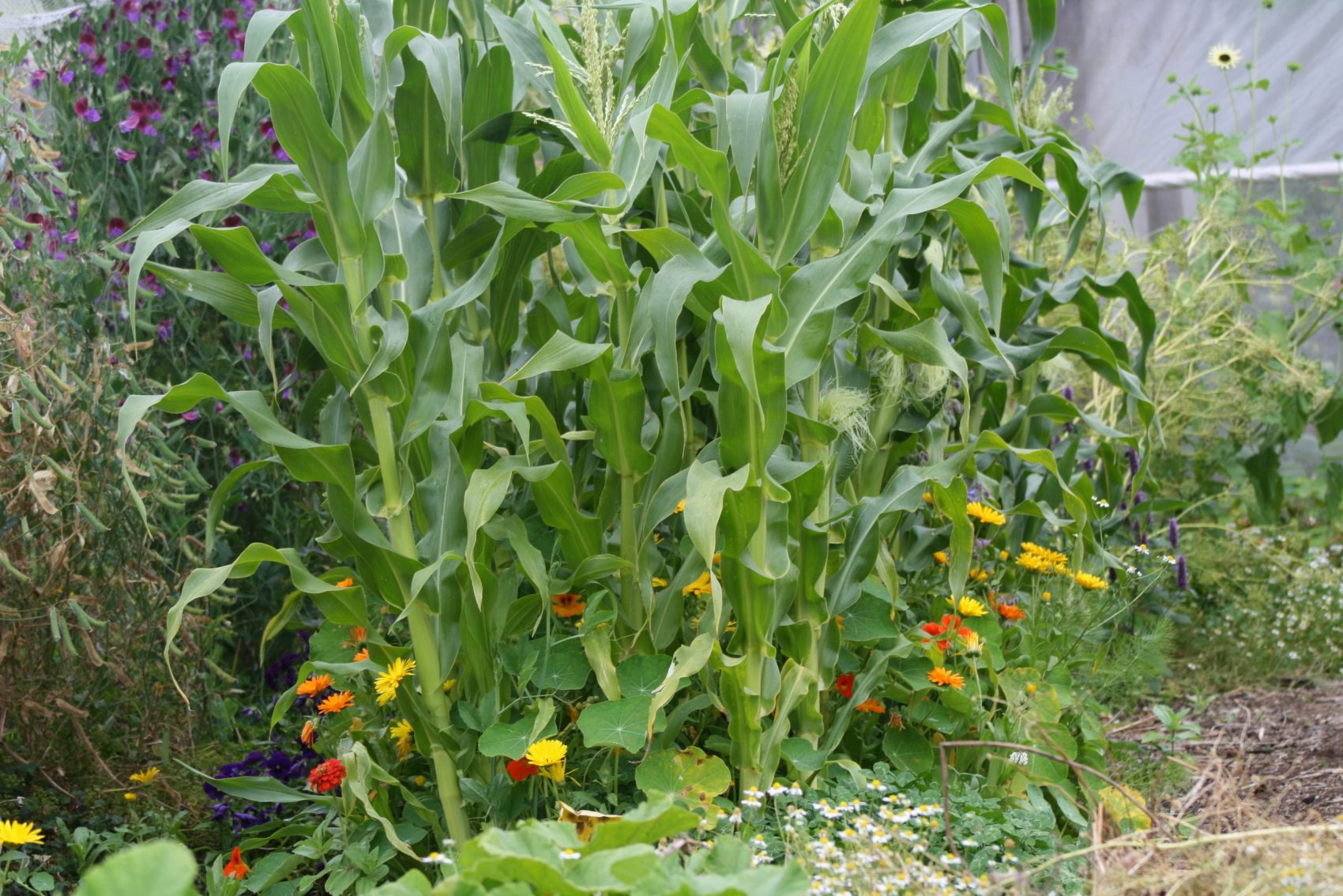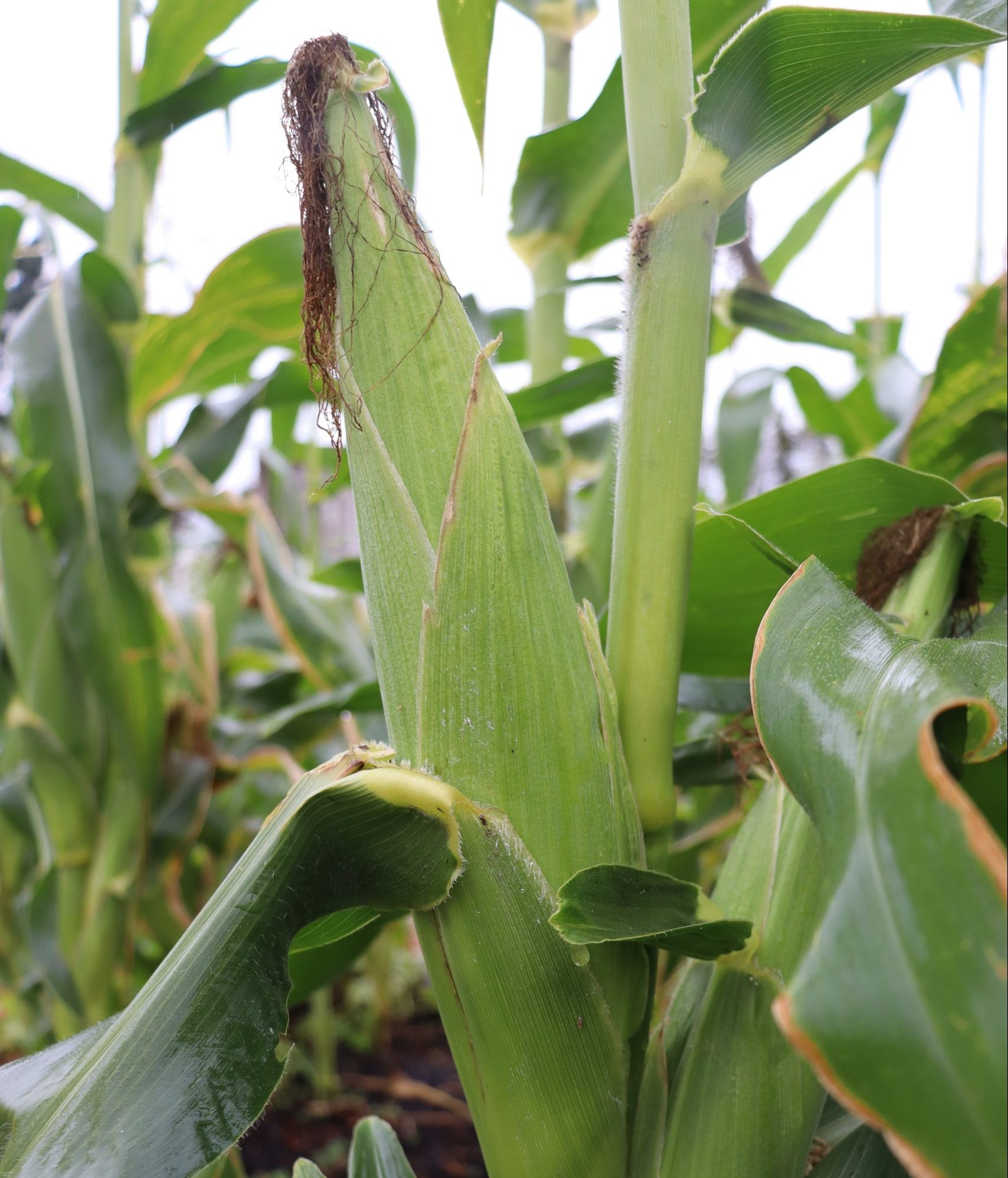How to Grow Sweetcorn


Corn is extra effort to grow, but to my mind, it's easily worth it! Not only is corn a heavy feeder - meaning good soil prep is required, but its also best to stagger the sowings and plantings so as to drip feed the kitchen and eating corn at its prime - straight from the garden to the pot to the plate. Sweet and crisp.
Timing
Corn rockets away in the warmth. Await soil temperatures of 20°C for your first planting. The warmer it is the better the crops. A new lot sown every 2 weeks October through December is better by far than one big sowing. Dot corn about in groups, filling the space created as greencrops or other crops finish. Carry on sowing into January if you live in warmer climes.
Soil prep
Corn is firmly in the hungry camp - its a grass after all and as such devours nitrogen. Rotten manure is an excellent addition to your bed of compost, so too, liquid feeding the young ones to get them growing strongly from the outset. Mulch the bed well - either with a living mulch or a pile of gathered debris.
Sow

Though seed can be direct sown, I prefer to sow in plug trays or toliet rolls to prevent rats, mice and birds gobbling the seed, or slugs and snails devouring the shoots. Toliet rolls can be planted roll and all into the soil for a smooth transition.
Grow

The closest I dare plant my corn is 30cm. Too close and crops are too small, too far apart and in come the weeds - find the goldilocks point where you make the most efficient use of your space at the same time giving the crop what it needs. Adapt spacings to suit your soil, go wider in poorer soils. Two cobs per plant is an average harvest to expect, so if you rock out 3 or 4 you can be pretty pleased with yourself.
Gappy corn means poor pollination. The tassels at the top drop pollen on the silks at the end of the cobs. Each silk is a kernel. If a silk isn't dusted with pollen, no kernel grows. Nature is so fine, isn't she?!
For best all round pollination, plant corn in groups - circles or squares are better than rows. A group is stronger against big winds. Give plants a gentle shake as you pass by on your daily walk about if there's no wind at that crucial time when silks and tassles are formed. Gappy cobs are still edible, though if they are really lacking the chooks wont say no!
Corn tillers, that is, it sends shoots out from the base. Its often recommended to remove these, but it doesn't seem to make much difference, so I leave them and often score another little cob or two. Try it out both ways and see what you reckon.
Varieties
Heritage corn is a different beast entirely to hybrid corn. Hybrid is far too sweet for me and because of its dubious origins I prefer not to indulge it ( fussy I know!) Most heritage corn is best suited to grinding for flour, and is too floury to eat (for me anyway). Two heritage varieties have the perfect balance of tasty + sweet - Golden Bantam and Early Gem. If popcorn is on the menu at yours - have a go at growing some - delicious!, and lots of fun for kids.
Companions
Corn grows well with beans - it makes complete sense right, a hungry crop + a nitrogen fixer make the perfect team. Soya beans are the classic companion, dwarf beans work well as does an undersowing of crimson clover. I've never had joy with climbing beans growing up corn as the beans end up completely smothering the corn and harvest of either becomes impossible. Peoples the world over do it successfully though, so don't take my experience as gospel. Zinnias, marigolds, nasturtium, phacelia, cucumber, zuchinni or squash all play well with corn - grow them on the sunny edges.
Harvest

When the silks on the end of the cob wither and turn brown its ready to pick. Hold the cob firmly and snap it downwards to break it off. Be sure the pot is boiling and ready to receive!
